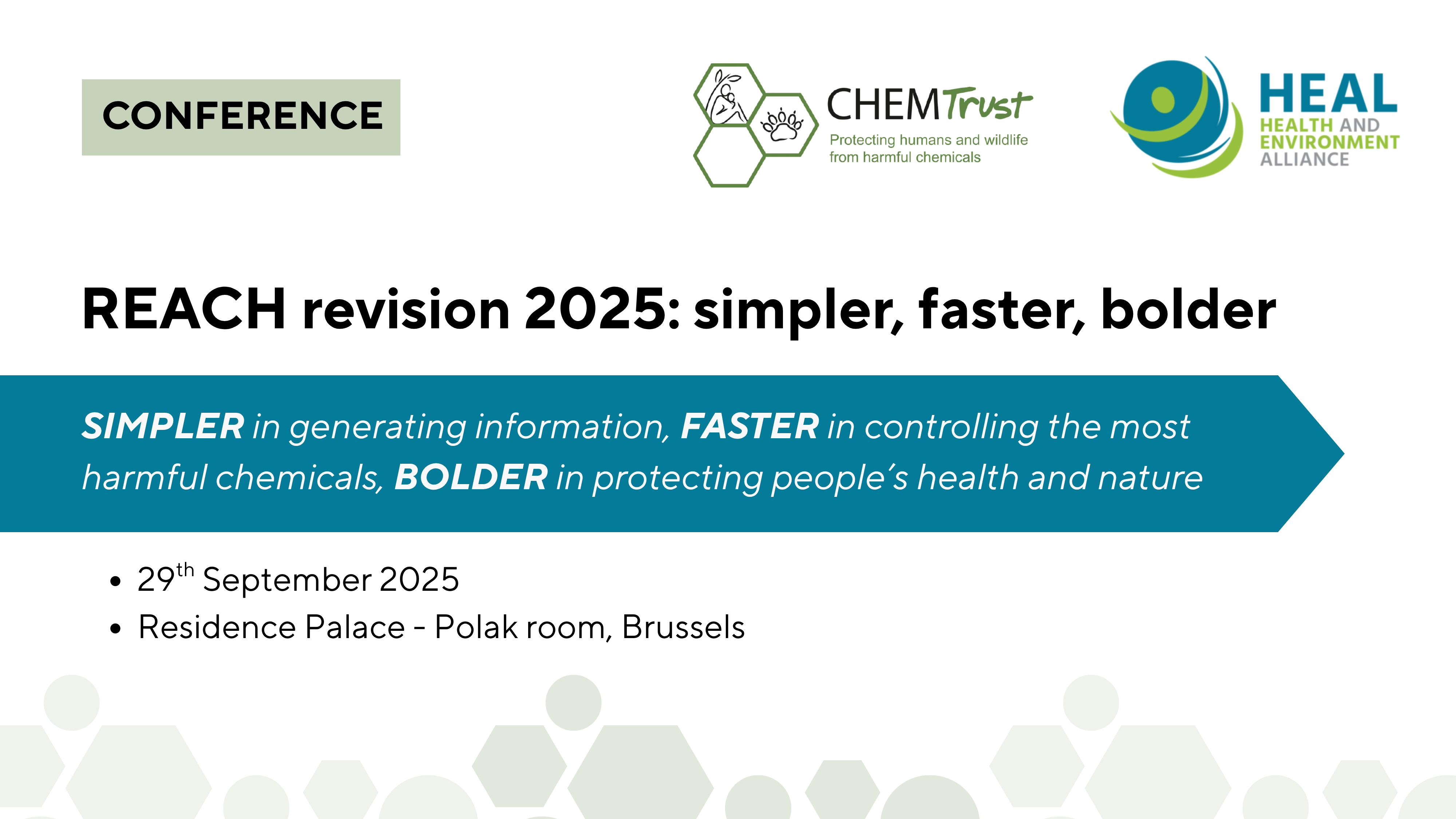Today’s publication of the European Commission’s chemicals omnibus confirms serious concerns: if pushed through the proposal will significantly weaken protections in the Cosmetic Products Regulation, allowing the prolonged use of carcinogens and other harmful chemicals in personal care products.

EXPPERT Survey 9: Analysis of hair samples of seven French celebrities Seven French celebrities discover their contamination from endocrine disruptors Générations Futures EXPPERT survey number 9 provides the results of tests for the presence of suspected or known endocrine disruptors in hair samples of some leading environmentalists in France. The worrying and conclusive results are the basis for a further call to the European Commission to improve its proposal on criteria for identifying endocrine disrupting chemicals ahead of a possible vote by EU Member States on 28 February 2017. Paris, Brussels, 24 February 2017 – Seven environmentalists in France have their hair analysed for traces of endocrine disrupting chemicals. Generations Futures, with the support of HEAL and other members of the EDC-Free Europe coalition, published a new report yesterday, the 9th survey of the EXPPERT series on population exposure to chemicals that are suspected or known to disrupt the endocrine system. The results are unchallengeable! Who? In this new survey, Générations Futures asked personalities from the environmental movement to entrust to us a lock of their hair, which we had analysed by a competent laboratory. The participants were Yann Arthus-Bertrand, Isabelle Autissier, Delphine Batho, José Bové, Nicolas Hulot, Yannick Jadot and Marie-Monique Robin. What? Approximately 200 pesticides (products used in agriculture and in the home to get rid of “harmful” or “undesirable” flora and fauna) and pesticide metabolites (resulting from metabolism), three bisphenols (plasticiser used in the composition of the polycarbonate – hard plastic), 13 phthalates and metabolites of phthalates (plasticisers used to soften plastics) and 32 PCB congeners (PCBs have been banned since 1987 but were used massively in electric transformers and as heat transfer fluid.). Results? 100% of the personalities has traces of each of the families of compounds analysed in their bodies! “The hair of the personalities tested all contain an important cocktail of many endocrine disruptors (between 36 and 68 per person) although tests were only carried out on four families of chemicals. And these cocktails pose a problem – what is the health impact of this mixture?” says Francois Veillerette, spokesperson for Future Generations. “This report points out more than ever the need to remove endocrine disrupting substances from our environment. Only a truly protective definition within the European framework will ensure that endocrine disruptors are excluded from the market and protect populations from these hazardous compounds. That is why the vote on the Standing Committee on Plants, Animals, Food and Feed (SCOPAFF) on 28 February is so important! We urge all national governments to reject the European Commission’s proposal on the criteria for endocrine disrupting chemicals in its current form and insist on major changes to ensure that proven, probable or suspected endocrine disruptors to which we are exposed are identified as such. Only in this way will these chemicals be prohibited from use as required in the European legislation voted in 2009, to protect our health,” he concluded.
![]() – We discover between 36 (D. Batho) and 68 (I. Autissier) endocrine disrupters per personality. The quantities varied from 9 031 μg/mg of endocrine disrupting chemical (D. Batho) to 158 643 μg/mg (I. Autism) – a discrepancy factor of 17.5 times between the least contaminated person (D. Batho) and the most contaminated person (I. Autissier). This clearly shows that individual’s exposure is not uniform but rather varies considerably according to the environment in which they circulate and/or in which they have developed and lived.
– We discover between 36 (D. Batho) and 68 (I. Autissier) endocrine disrupters per personality. The quantities varied from 9 031 μg/mg of endocrine disrupting chemical (D. Batho) to 158 643 μg/mg (I. Autism) – a discrepancy factor of 17.5 times between the least contaminated person (D. Batho) and the most contaminated person (I. Autissier). This clearly shows that individual’s exposure is not uniform but rather varies considerably according to the environment in which they circulate and/or in which they have developed and lived.![]() Bisphenols: All the personalities tested had at least one of the three bisphenols in their hair. Three out of the seven people tested had the renowned Bisphenol A in their hair: M-M. Robin, Y. Arthus-Bertrand and I. Autissier. All 7 had Bisphenol S but none had signs of Bisphenol F.
Bisphenols: All the personalities tested had at least one of the three bisphenols in their hair. Three out of the seven people tested had the renowned Bisphenol A in their hair: M-M. Robin, Y. Arthus-Bertrand and I. Autissier. All 7 had Bisphenol S but none had signs of Bisphenol F.![]() Phthalates: 11 of the 13 phthalates or metabolites of phthalates tested for were found at least in one person. Neither MMP or DPP were found in any sample. The number of phthalates and metabolites of phthalates found ranged from eight to 11 depending on the individual. Between six and 10 of these molecules could be quantified in each person.
Phthalates: 11 of the 13 phthalates or metabolites of phthalates tested for were found at least in one person. Neither MMP or DPP were found in any sample. The number of phthalates and metabolites of phthalates found ranged from eight to 11 depending on the individual. Between six and 10 of these molecules could be quantified in each person.![]() PCBs: All samples that could be analysed contained PCBs: between 14 and 30 PCBs were found in participants’ samples.
PCBs: All samples that could be analysed contained PCBs: between 14 and 30 PCBs were found in participants’ samples.![]() Pesticides: 32 molecules suspected of being endocrine disruptors or endocrine disrupting metabolites were found in at least one person. Between nine and 25 of these pesticides were found in each hair sample tested.
Pesticides: 32 molecules suspected of being endocrine disruptors or endocrine disrupting metabolites were found in at least one person. Between nine and 25 of these pesticides were found in each hair sample tested.



